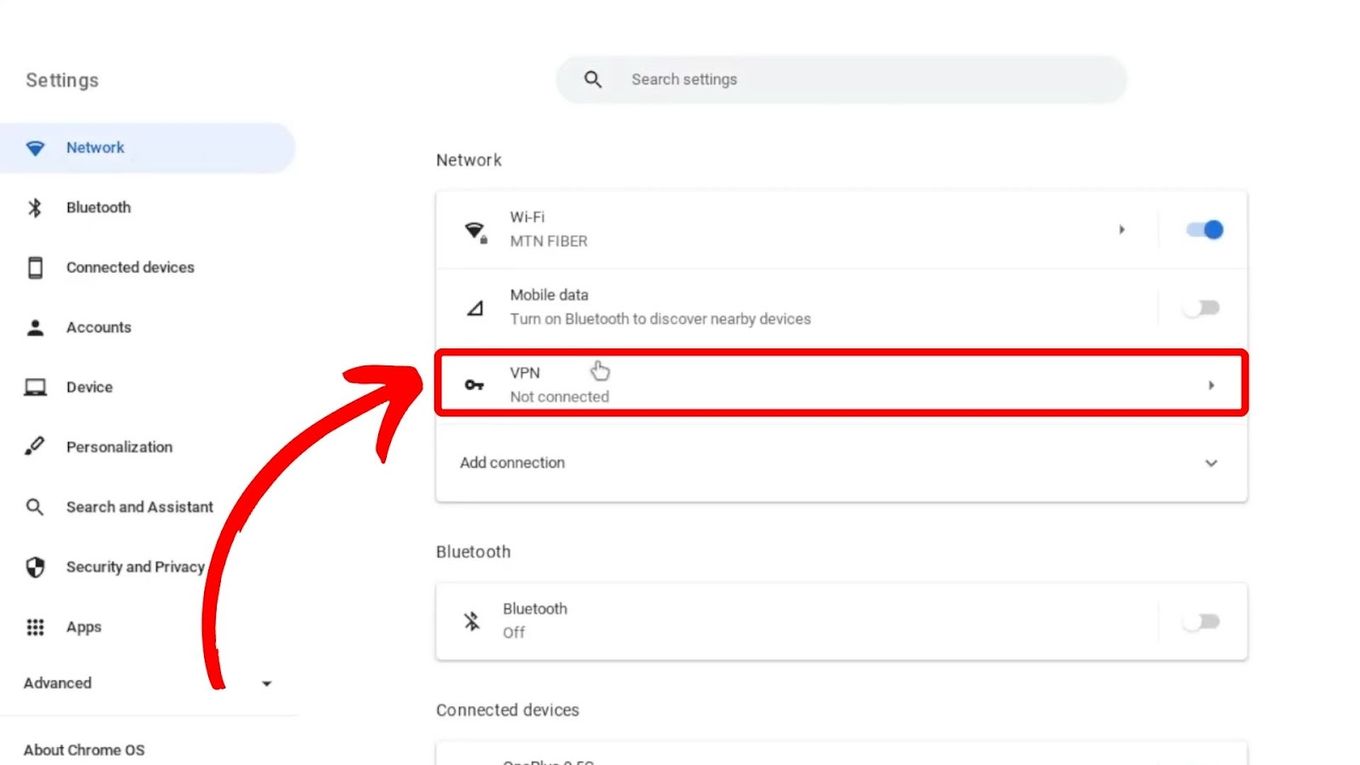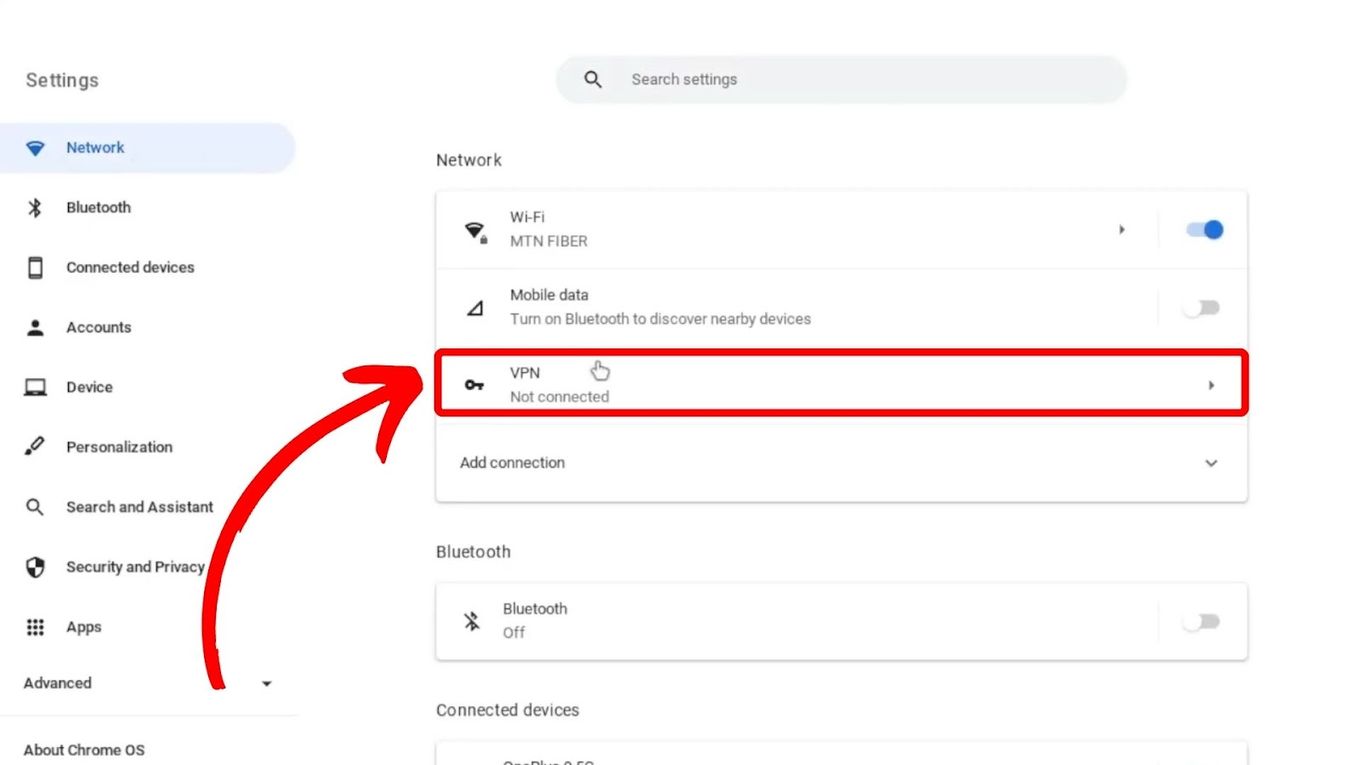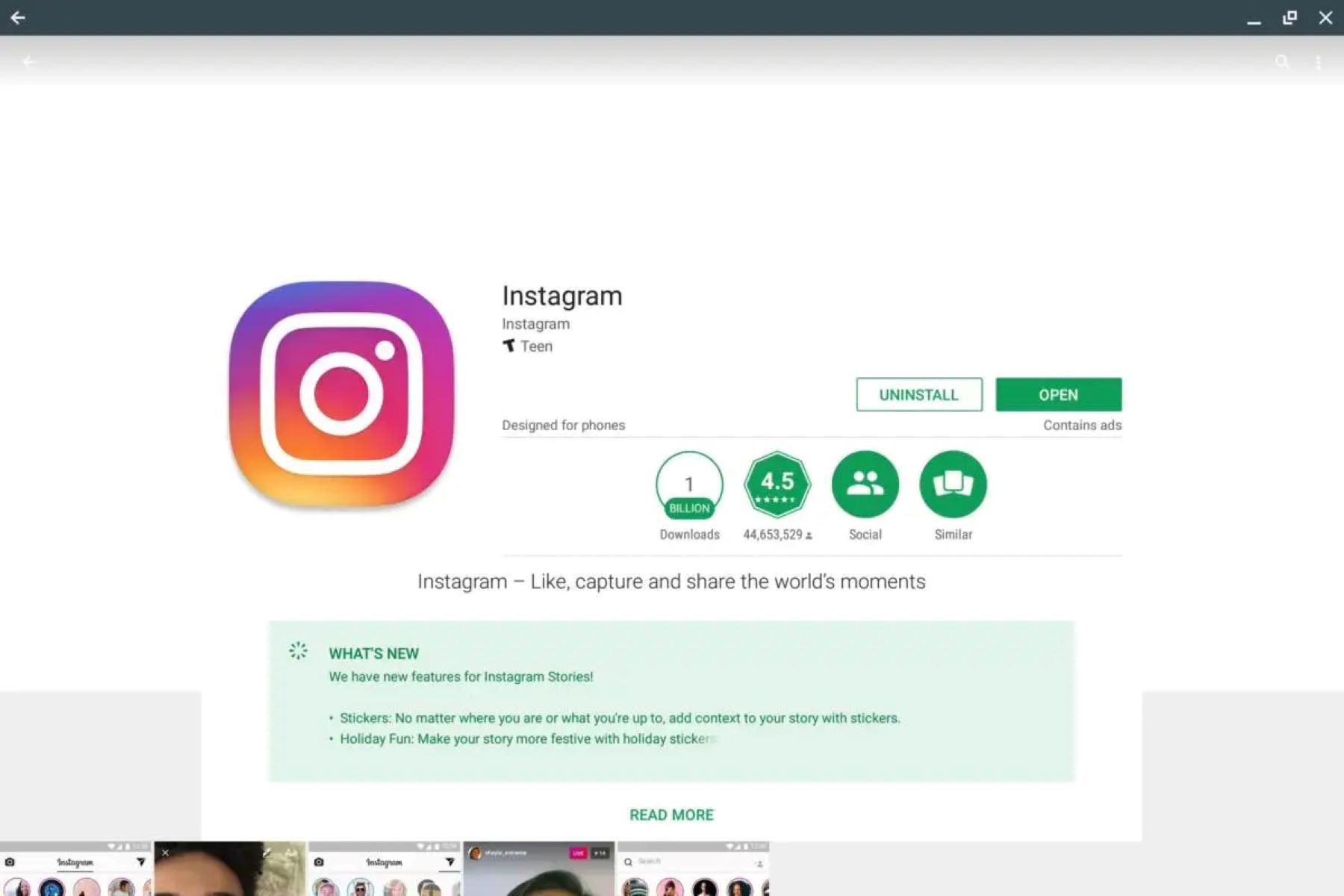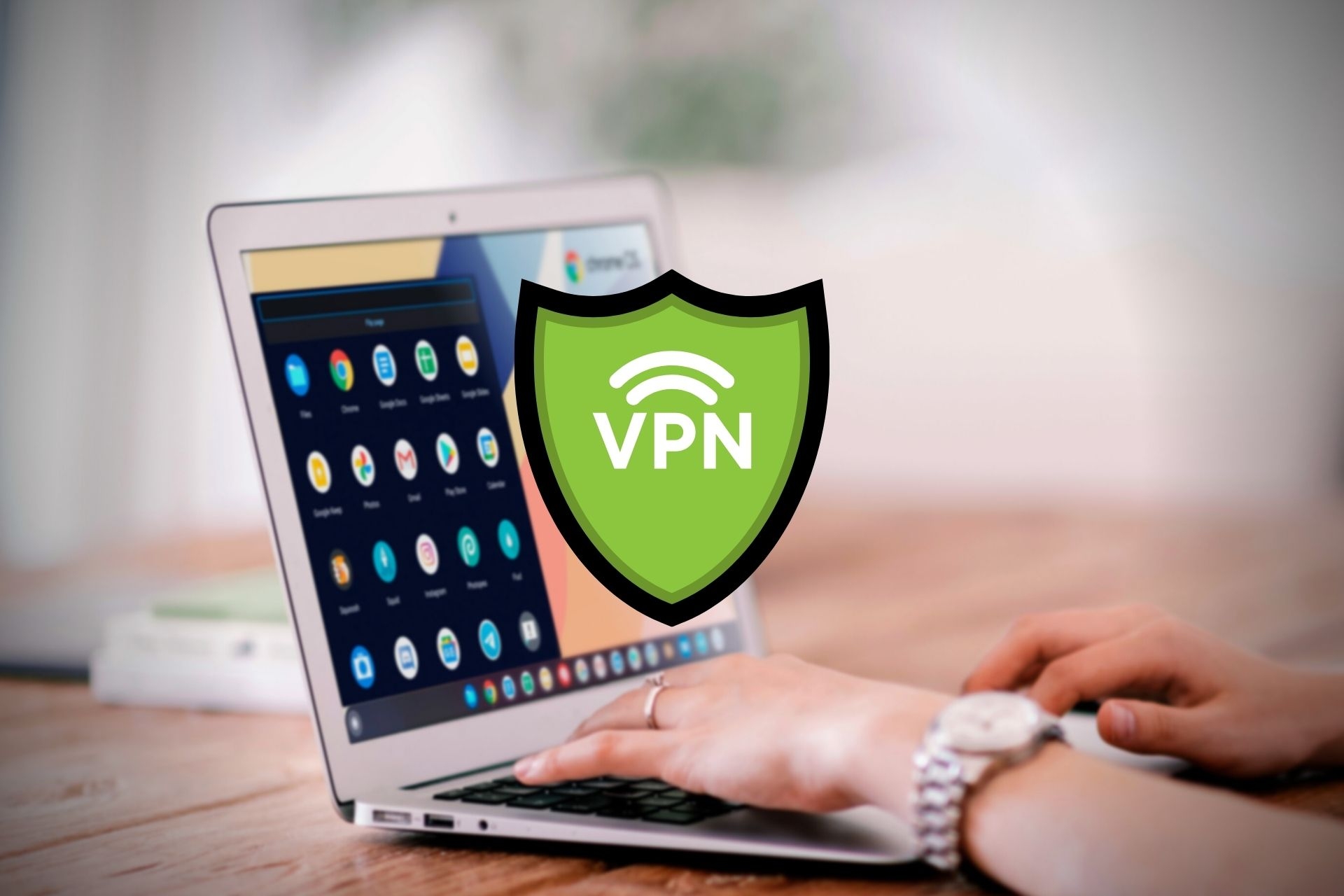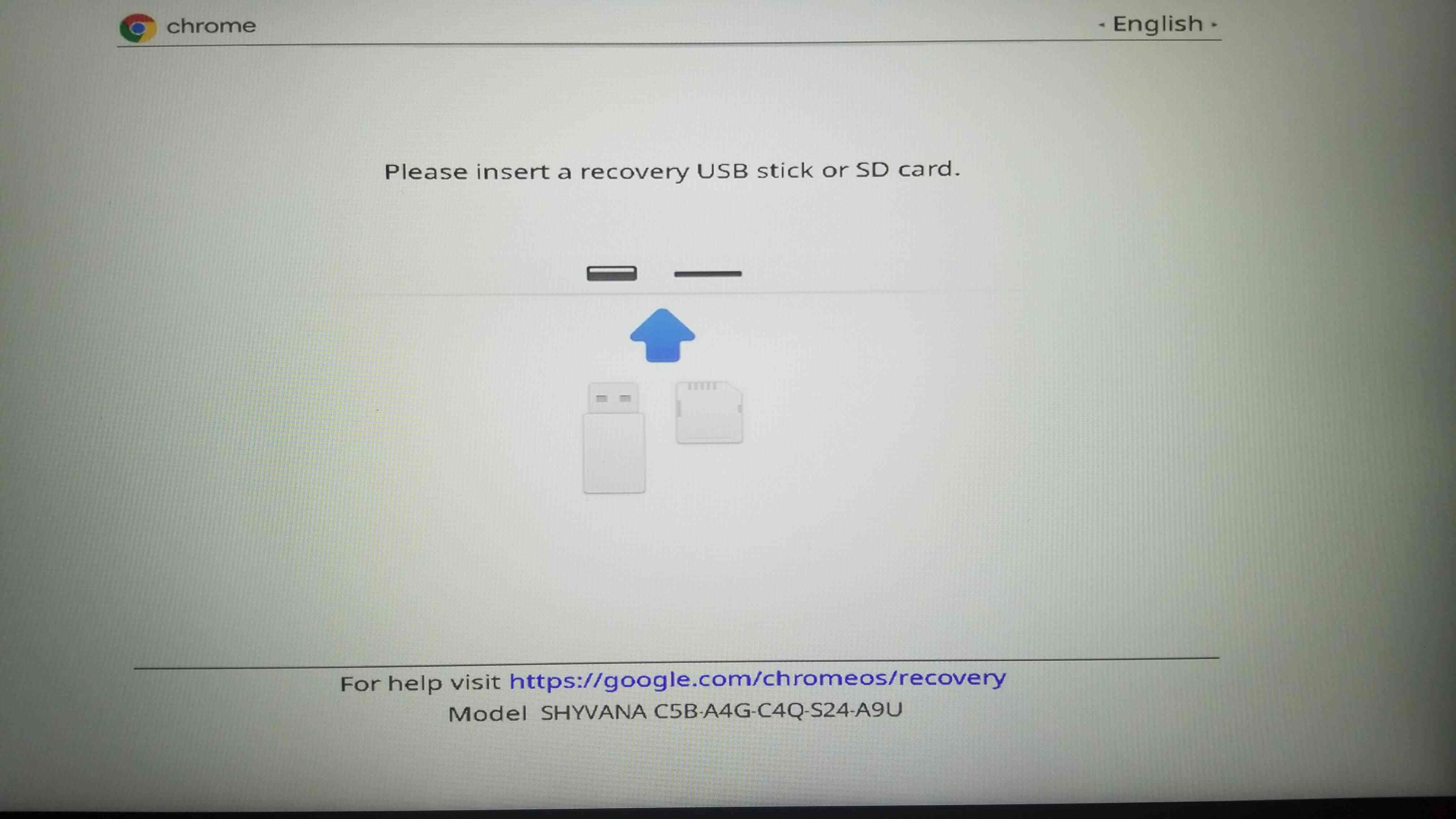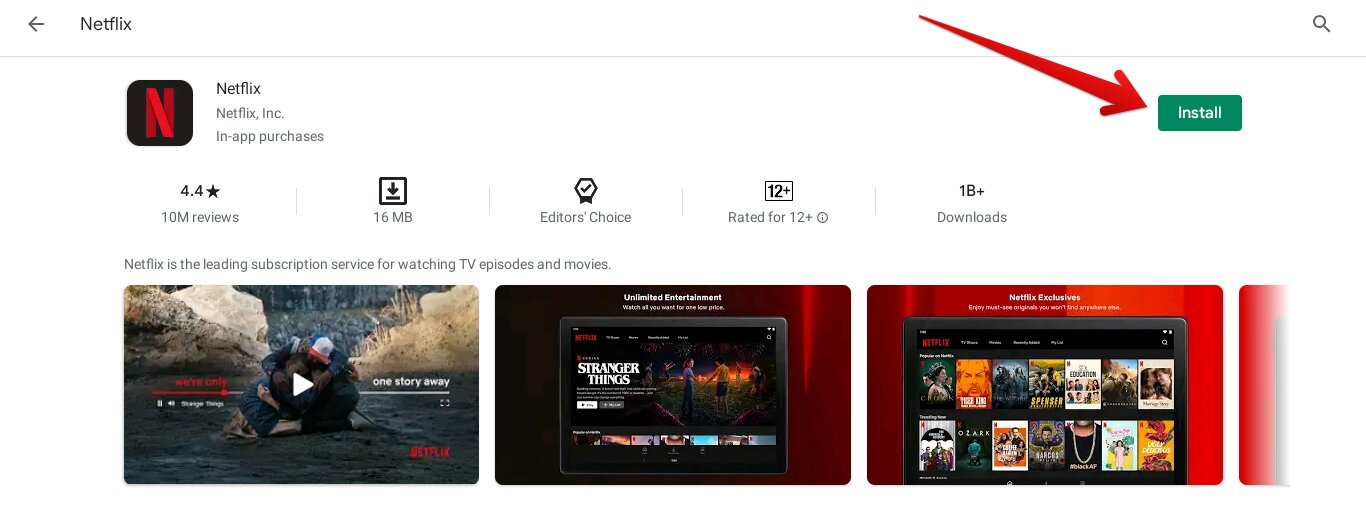Introduction
As students increasingly rely on their Chromebooks for learning and completing school work, there may be instances where accessing certain websites or online resources is restricted by the school’s network. Luckily, by using a Virtual Private Network (VPN), you can bypass these restrictions and access the content you need.
A VPN creates a secure and encrypted connection between your Chromebook and the internet, allowing you to browse the web anonymously and access blocked websites. Whether you’re looking to stream videos, access social media, or use apps that are blocked by your school, a VPN can be a valuable tool.
However, downloading and installing a VPN on a school Chromebook may require some additional steps and considerations. In this article, we’ll guide you through the process of downloading a VPN on your school Chromebook, ensuring that you can browse the web freely and securely.
Please note that it’s important to familiarize yourself with your school’s policies regarding the use of VPNs on school-provided devices. Some schools may have specific guidelines or restrictions that you need to abide by. Always check with your school’s IT department or administration before proceeding.
Step 1: Check School Policies
Before proceeding with downloading a VPN on your school Chromebook, it’s crucial to review your school’s policies and guidelines regarding the use of VPNs. While VPNs can be valuable tools for accessing blocked content, some schools may have strict regulations or prohibitions in place.
Start by checking your school’s official website or handbook for any information regarding the use of VPNs on school-provided devices. Look for any policies or guidelines that outline the acceptable use of technology and internet access. If you can’t find the information online, reach out to your school’s IT department or an administrator for clarification.
Some schools may explicitly forbid the use of VPNs or have specific restrictions on the types of VPNs that are allowed. They may have concerns about security, potential misuse, or the bypassing of web filters that are in place for student safety. It’s essential to respect and adhere to your school’s policies to avoid any disciplinary actions.
If your school permits the use of VPNs, they may have recommended or approved VPN providers that you should use. These recommended providers will likely adhere to the school’s security and privacy standards, ensuring a safe and secure browsing experience. Make sure to take note of any specific instructions or requirements provided by your school.
By familiarizing yourself with your school’s policies, you can proceed with confidence knowing that you are following the rules and using a VPN in a responsible manner. Once you have a clear understanding of your school’s guidelines, you can proceed to the next step of choosing a VPN provider.
Step 2: Choose a VPN Provider
When it comes to choosing a VPN provider for your school Chromebook, there are several factors to consider. You want to select a reputable and reliable provider that offers the features and capabilities you need.
Start by researching different VPN providers that are compatible with Chromebooks. Look for providers that have positive reviews and a track record of delivering secure and fast connections. It’s also important to ensure that the VPN provider offers a Chrome browser extension or app specifically designed for Chromebooks.
Consider the features you require from a VPN. Do you need a VPN that allows for unlimited bandwidth or multiple simultaneous connections? Are you looking for a provider with servers located around the world to access geo-restricted content? Assess your needs and compare them against the features offered by different providers.
Another crucial factor to consider is the provider’s privacy policy. Look for VPNs that have a strict no-logs policy, meaning they do not keep records of your online activities. This ensures that your browsing history and personal information are kept private.
Additionally, take into account customer support options and the provider’s reputation for responding to customer inquiries or issues. Reliable customer support can be crucial if you encounter any technical difficulties or have questions about the VPN’s functionality.
Lastly, cost may be a deciding factor. VPN providers offer various pricing plans, so consider your budget and select a provider that offers a reasonable price for the features you require. Many VPNs also offer free trials or money-back guarantees, which can be beneficial for testing out the service before committing to a subscription.
By carefully evaluating different VPN providers based on compatibility, features, privacy policy, customer support, and pricing, you can choose a provider that best suits your needs. Once you have selected a VPN provider, you are ready to move on to the next step of downloading the VPN extension from the Chrome Web Store.
Step 3: Go to Chrome Web Store
In order to download a VPN extension for your school Chromebook, you will need to navigate to the Chrome Web Store. The Chrome Web Store is an online marketplace where you can find and install various extensions for your Chrome browser.
Start by opening your Chrome browser on your Chromebook. Once the browser is open, click on the “Apps” button located on the bookmarks bar. This will open a list of installed apps and extensions on your Chromebook.
Next, click on the “Web Store” icon, which resembles a small blue puzzle piece. This will take you directly to the Chrome Web Store homepage.
Alternatively, you can directly access the Chrome Web Store by typing “chrome.google.com/webstore” in the address bar of your Chrome browser.
Once you are on the Chrome Web Store homepage, you will have access to a wide range of extensions and apps. The store is organized into different categories, making it easy to navigate and find the specific extension you’re looking for.
Before moving on to the next step, it’s important to note that the Chrome Web Store hosts both official and third-party extensions. It’s recommended to stick to official extensions, as they have been reviewed by Google and are generally considered safe to use.
With the Chrome Web Store open, you are now ready to search for a VPN extension. In the next step, we will guide you through the process of finding and selecting a suitable VPN extension for your school Chromebook.
Step 4: Search for VPN Extensions
Now that you are on the Chrome Web Store homepage, it’s time to search for VPN extensions suitable for your school Chromebook. A VPN extension will enable you to establish a secure and encrypted connection while browsing the internet.
Start by clicking on the search bar located at the top left corner of the Chrome Web Store homepage. Type in keywords such as “VPN” or “virtual private network” to initiate the search. Press enter or click on the magnifying glass icon to view the search results.
The search results will display various VPN extensions available in the Chrome Web Store. Take your time to browse through the options and read the descriptions and user reviews. This will help you make an informed decision about which VPN extension to choose.
Look for VPN extensions that have positive reviews, a high rating, and a good number of users. This indicates that the extension is reliable and trusted by the Chrome community. Pay attention to the features and capabilities mentioned in the descriptions to ensure they fulfill your specific needs.
If your school has recommended or approved specific VPN providers, search for those providers specifically to see if they have official extensions available in the Chrome Web Store. These official extensions are more likely to comply with your school’s guidelines and may offer additional features catered to educational purposes.
While browsing, also make note if the VPN extensions offer free or premium versions. Free versions typically come with limitations, such as a restricted number of server locations or slower speeds. Premium versions, on the other hand, often offer more features and a wider range of server options.
Take your time to compare different VPN extensions and their features before proceeding to the next step. Once you’ve chosen a suitable VPN extension, you’re ready to move on to downloading and adding it to your Chrome browser.
Step 5: Select a VPN Extension
Now that you have searched for VPN extensions on the Chrome Web Store, it’s time to select the one that best fits your needs and requirements. Choosing the right VPN extension will ensure that you have a secure and reliable connection on your school Chromebook.
Start by reviewing the different VPN extensions that appeared in your search results. Pay attention to the details provided in the descriptions, such as the number of users, average rating, and the features offered. These details will give you an overview of the extension’s popularity and functionality.
Read the user reviews and ratings for each VPN extension. This will provide insight into the experiences of other users and help you gauge the reliability and performance of the extension. Look for extensions with positive feedback and high ratings to ensure a quality experience.
Consider the specific features and capabilities that are essential to you. Some VPN extensions may offer features like ad-blocking, malware protection, or the ability to access content from different countries. Choose an extension that aligns with your needs and preferences.
If your school has recommended specific VPN providers, check if any of those providers are available as extensions. Opting for a recommended provider may ensure better compatibility with your school’s network and adherence to their policies.
Furthermore, take note of the pricing options for the VPN extensions. Some offer a free version with limited features or a trial period, while others require a subscription for full functionality. Consider your budget and what you are willing to invest in a VPN extension.
Once you have carefully considered these factors and made a decision, click on the VPN extension to access its dedicated page on the Chrome Web Store. On this page, you will find more detailed information about the extension’s features, reviews, and installation requirements.
Take a final look at the details provided to make sure it meets your needs. If you are satisfied, you can proceed to the next step of adding the VPN extension to your Chrome browser.
Step 6: Click on “Add to Chrome”
After selecting the VPN extension that suits your needs, it’s time to add it to your Chrome browser. Adding the extension to Chrome is a straightforward process that will enable you to start using the VPN on your school Chromebook.
On the VPN extension’s dedicated page in the Chrome Web Store, you will see an “Add to Chrome” button. Click on this button to begin the installation process.
A pop-up dialog box will appear, asking for confirmation to add the extension. Review the permissions and information displayed in this dialog box to ensure you are comfortable with the access the extension requires. This may include access to your browser data or permission to change your proxy settings.
Once you have reviewed the information, click on the “Add extension” button to initiate the installation. Chrome will then begin downloading and installing the VPN extension on your Chromebook. The time it takes for the installation process to complete will vary depending on the size of the extension and the speed of your internet connection.
While the extension is installing, you may see a progress bar or loading symbol indicating that the process is underway. It’s important to remain patient and avoid interrupting the installation to ensure that the VPN extension is properly installed and functional.
Once the installation process is complete, you will receive a notification confirming that the VPN extension has been added to Chrome. At this point, the extension’s icon will also appear in the toolbar at the top right corner of your Chrome browser.
Congratulations! You have successfully added the VPN extension to your Chrome browser. In the next step, we will guide you through the process of signing into the VPN extension and configuring your connection.
Step 7: Confirm the Installation
After adding the VPN extension to your Chrome browser, it’s important to confirm that the installation was successful. Confirming the installation will ensure that the VPN extension is ready for use and that you can proceed with the next steps of configuring and using it on your school Chromebook.
Start by looking for the VPN extension’s icon in the toolbar at the top right corner of your Chrome browser. The icon will typically be a small logo representing the VPN provider or a generic signal icon indicating a VPN connection.
If you can see the icon, this indicates that the VPN extension has been successfully installed. Hover your mouse over the icon to view any additional information or options that may be available.
Clicking on the VPN extension’s icon will open its interface, allowing you to access its settings and establish a VPN connection. Take a moment to familiarize yourself with the available options and settings provided by the extension.
Ensure that the VPN extension is enabled by default. Some extensions may have an on/off switch or a toggle button that you can use to activate or deactivate the VPN connection. Verify that the switch is set to the “on” position to enable the VPN.
If the VPN extension’s icon does not appear in the toolbar, it’s possible that the installation was not successful. In this case, you may need to repeat the installation process or try installing a different VPN extension from the Chrome Web Store.
If you encounter any issues or need assistance, refer to the VPN extension’s documentation or customer support for further guidance. They can provide troubleshooting steps or advice to help you confirm the installation and resolve any problems that may arise.
Once you have confirmed that the VPN extension is installed and enabled, you’re ready to proceed with the next steps of signing into the extension and establishing a VPN connection. In the next step, we will guide you through the process of signing in to the VPN extension on your school Chromebook.
Step 8: Sign in to the VPN Extension
Now that the VPN extension is successfully installed on your Chromebook, it’s time to sign in to the extension using your VPN provider’s credentials. Signing in will allow you to fully utilize the features and functionalities of the VPN and customize your connection settings.
Start by clicking on the VPN extension’s icon located in the toolbar at the top right corner of your Chrome browser. This will open the extension’s interface.
Within the VPN extension’s interface, you should see an option to sign in or log in. Click on this option to proceed with the sign-in process.
A sign-in window or prompt will appear, asking for your VPN provider’s login credentials. Enter the username and password associated with your VPN account. If you don’t have an account, make sure to create one on the VPN provider’s website before proceeding.
After entering your credentials, click on the “Sign In” or “Log In” button to submit the information. The VPN extension will then attempt to authenticate your account and establish a secure connection with the VPN provider’s server.
If your login credentials are correct, the VPN extension will successfully sign you in and indicate that you are connected to the VPN. You may also see additional options and settings within the extension’s interface, such as the ability to select a server location or configure VPN protocols.
However, if there are any issues with the login credentials or authentication process, the VPN extension will display an error message. In such cases, double-check your username and password and ensure that you have a stable internet connection. If you continue to experience issues, reach out to the VPN provider’s customer support for assistance.
Once you are signed in to the VPN extension, you have successfully authenticated your VPN account and can proceed to the next step of connecting to a VPN server. In the upcoming step, we will guide you through the process of selecting and establishing a VPN connection.
Step 9: Connect to a VPN Server
After signing in to the VPN extension on your Chromebook, the next step is to connect to a VPN server. Connecting to a server will establish a secure and encrypted connection between your Chromebook and the VPN provider’s network, ensuring your internet traffic is protected.
Open the VPN extension’s interface by clicking on its icon located in the toolbar at the top right corner of your Chrome browser. Within the interface, you should see an option to connect or a button that initiates the connection process.
Click on the connect option or button to start establishing a VPN connection. The VPN extension will display a list of available server locations from which you can choose.
Take a moment to review the list of server locations and consider your specific needs. If you are looking to access content from a specific country or region, select a server location that is closest to or located within that region.
Click on the server location to establish the VPN connection. The VPN extension will then begin connecting to the server, and you may see a loading animation or progress indicator while the connection is being established.
Once the connection is successful, the VPN extension will indicate that you are connected to the selected server. The extension’s icon may change or display a connected status to confirm the successful connection.
At this point, your internet traffic is securely routed through the VPN server, keeping your activities and data confidential. You can now browse the web, access blocked content, or use apps and services that were previously restricted by your school’s network.
If you would like to switch to a different server location or disconnect from the VPN, you can do so by accessing the VPN extension’s interface and selecting the appropriate options.
Remember, it’s important to adhere to your school’s policies and guidelines regarding the use of VPNs. Use the VPN responsibly and ensure that you are using it for legitimate activities that align with your school’s regulations.
With the VPN successfully connected, you can proceed with your online activities knowing that your connection is secure and your data is protected. In the final step, we’ll guide you through the process of verifying your VPN connection.
Step 10: Verify the VPN Connection
After connecting to a VPN server on your Chromebook, it’s important to verify that the VPN connection is active and functioning as intended. By confirming the VPN connection, you can ensure that your online activities are being routed through the secure tunnel established by the VPN.
Start by checking the VPN extension’s interface. The interface may display the current status of your VPN connection, indicating if you are connected or disconnected. This can be represented by a connected status message, a green icon, or a similar visual cue.
In addition to the interface, you can also verify the VPN connection by checking your IP address. A VPN masks your original IP address and assigns you a new one based on the server location you have connected to. To check your IP address, you can perform a simple web search or use an online IP address lookup tool.
If the IP address displayed is different from your original IP and corresponds to the location of the VPN server you connected to, it means that your VPN is successfully routing your internet traffic through the server.
Another way to test the VPN connection is to try accessing websites or content that was previously blocked or restricted by your school’s network. If you can now access these websites or content without any issues, it indicates that the VPN connection is working properly.
Keep in mind that the speed of your internet connection may be impacted when using a VPN. If you experience significantly slower speeds after connecting to the VPN, this is a common occurrence due to the encryption process. However, if the slowdown is excessively noticeable or causes disruption to your activities, you may need to try connecting to a different server or contact your VPN provider for assistance.
Lastly, periodically checking the VPN extension’s interface and monitoring your IP address can ensure that the VPN connection remains stable and active. If you notice any unexpected connection drops or inconsistencies, it’s important to troubleshoot and address the issue promptly.
By verifying the VPN connection, you can have peace of mind in knowing that your online activities are protected and your internet traffic is securely encrypted. Enjoy the freedom and privacy that the VPN provides as you browse the web on your school Chromebook.
Conclusion
Downloading and using a VPN on your school Chromebook can be a valuable solution for bypassing restrictions and accessing the content you need while maintaining a secure and private browsing experience. However, it’s important to always adhere to your school’s policies regarding the use of VPNs on their devices.
In this article, we have provided a step-by-step guide to help you download and install a VPN on your school Chromebook. We started by emphasizing the significance of checking your school’s policies regarding VPN usage and ensuring compliance with their guidelines.
We then walked you through the process of choosing a reputable VPN provider that aligns with your needs and preferences. We guided you on navigating to the Chrome Web Store, searching for VPN extensions, and selecting the most suitable one for your requirements.
Next, we covered the steps of adding the VPN extension to your Chrome browser, confirming the installation, and signing into the extension using your VPN provider’s credentials. We then explained how to connect to a VPN server, verify the connection, and ensure that your online activities are protected.
By following these steps, you can successfully download and use a VPN on your school Chromebook, enabling you to access blocked websites, bypass restrictions, and maintain privacy and security while browsing the internet.
Remember to use the VPN responsibly and respect the policies set by your school. VPNs can be powerful tools, but it’s important to use them ethically and for legitimate purposes.
We hope that this article has provided you with the necessary guidance to download a VPN on your school Chromebook. Enjoy the benefits of a secure and unrestricted internet experience while keeping your schoolwork and online activities accessible.







